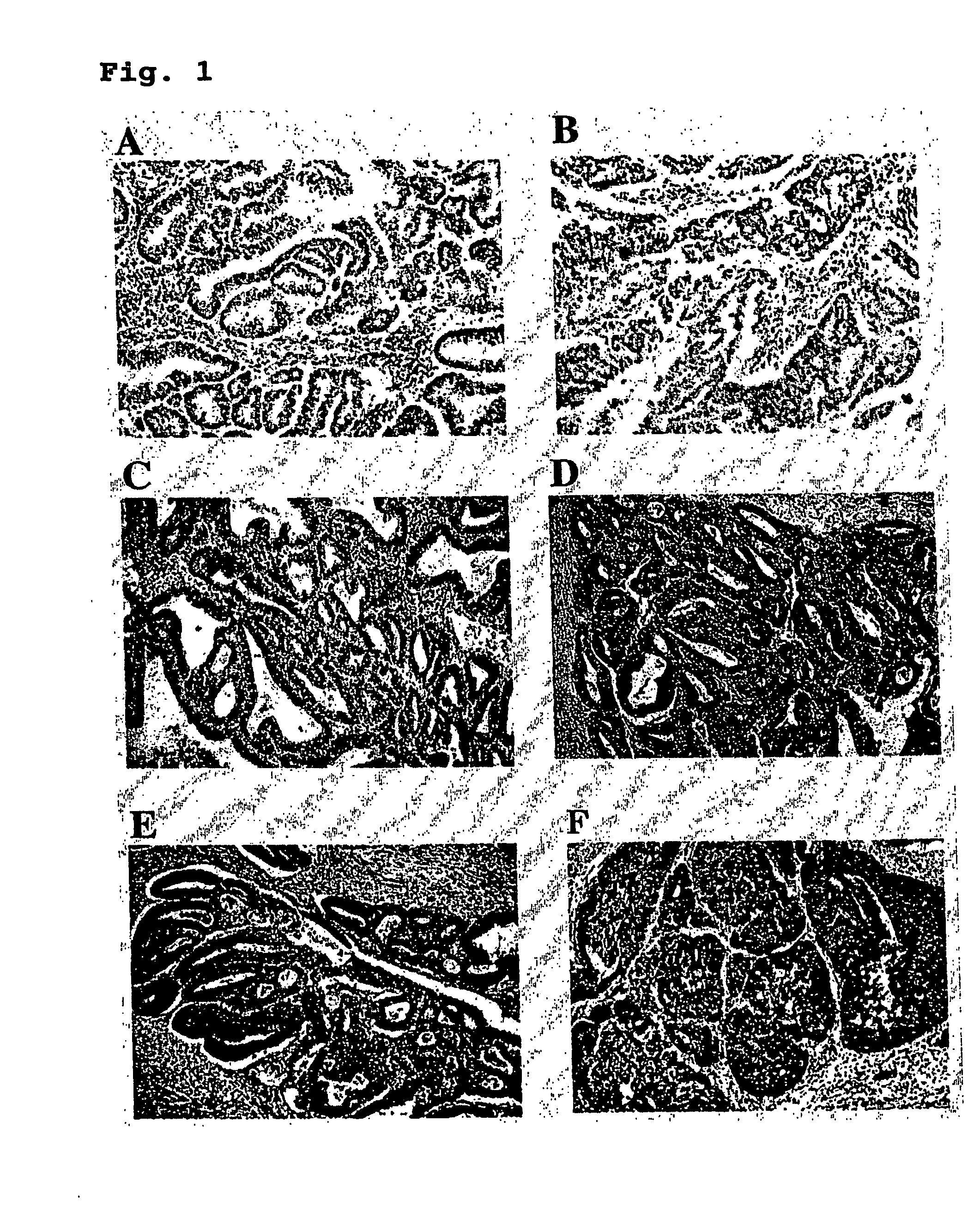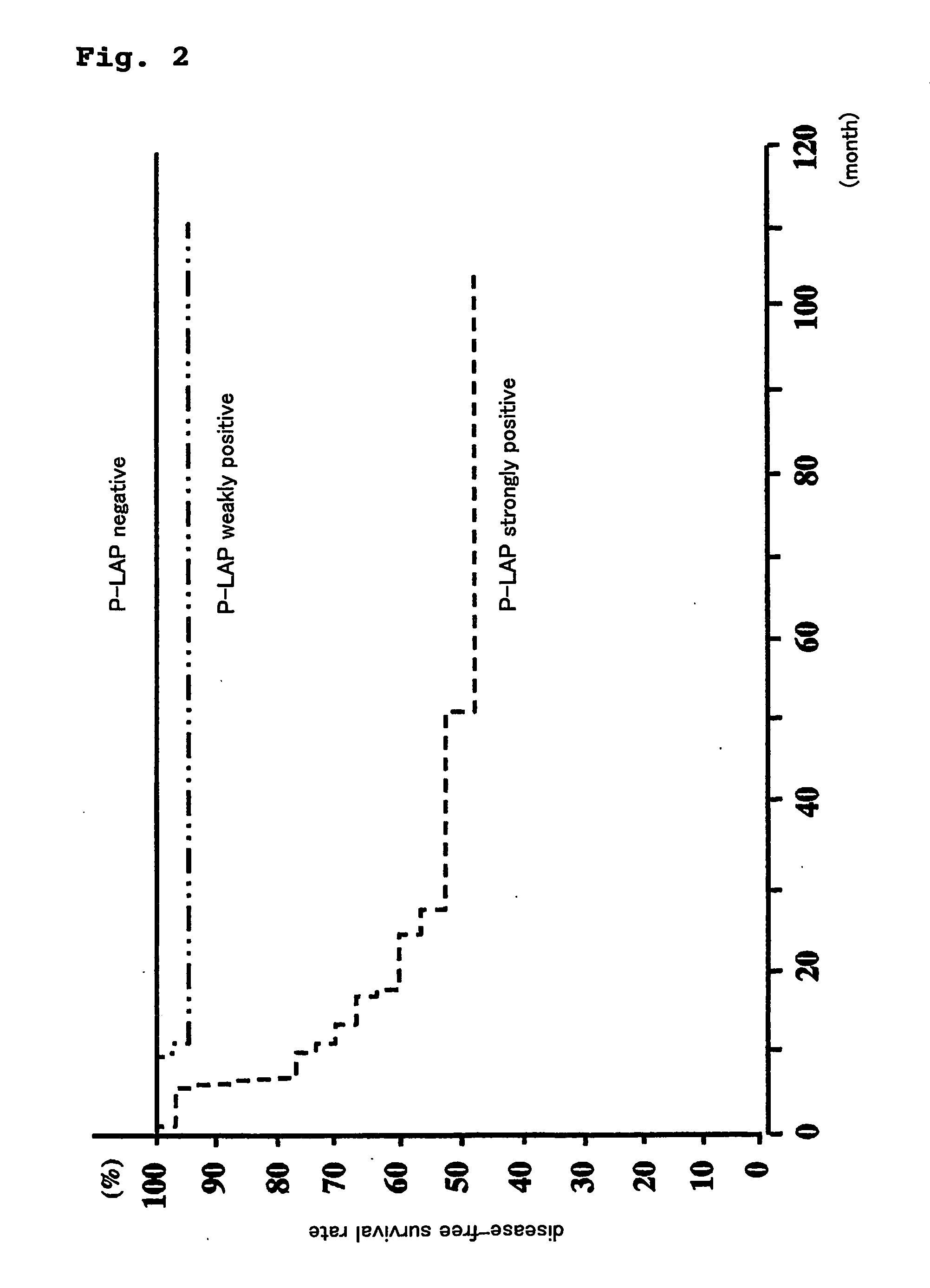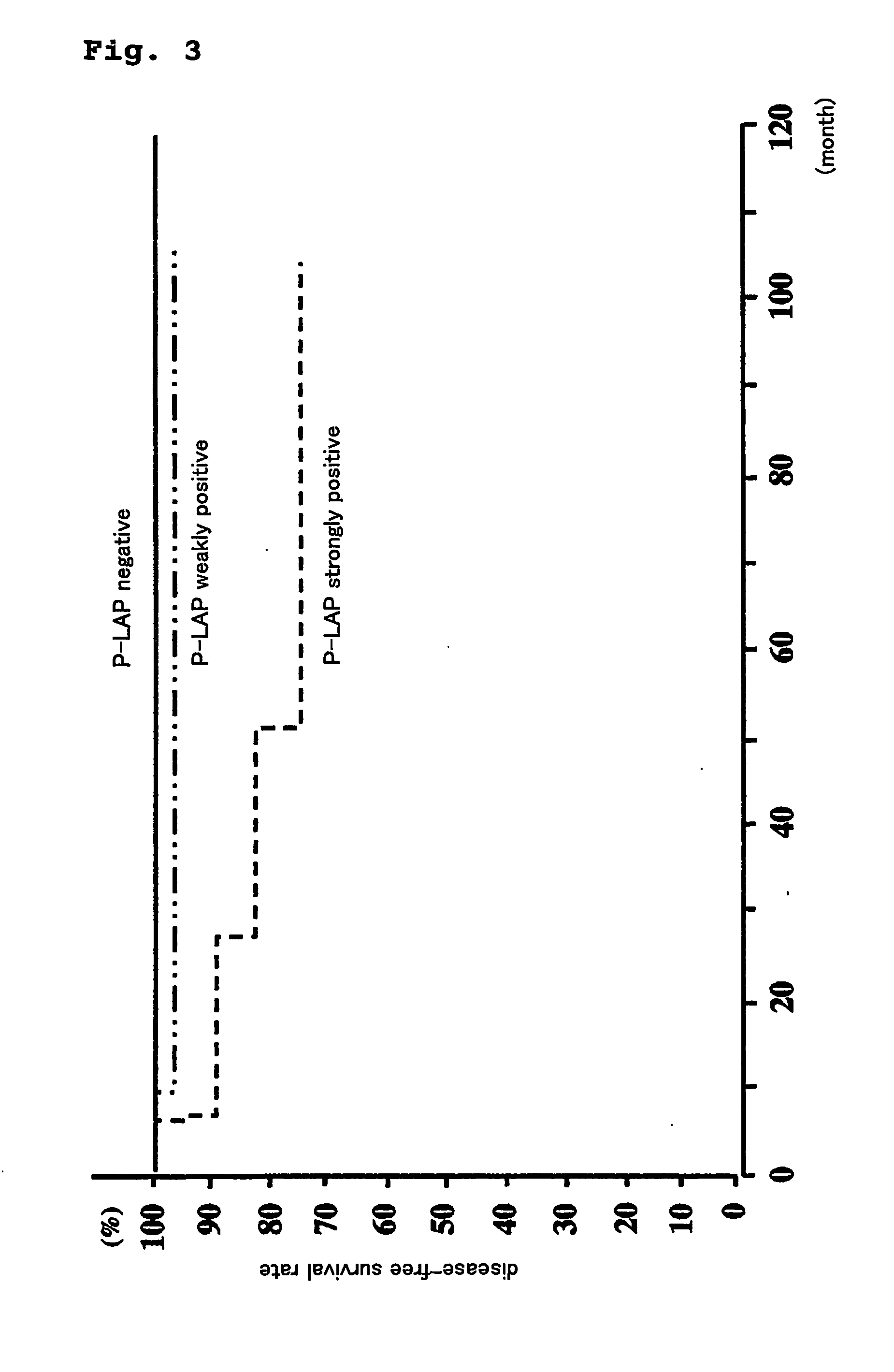Method for prognostic evaluation of carcinoma using anti-p-lap antibody
a prognostic evaluation and antibody technology, applied in the field of methods, can solve the problems of inability to say that the clinicopathological indicators described in the literature are completely reliable indicators, and the credibility factor has not yet been discovered, and achieve the effect of accurate prognostic evaluation of carcinoma
- Summary
- Abstract
- Description
- Claims
- Application Information
AI Technical Summary
Benefits of technology
Problems solved by technology
Method used
Image
Examples
example 1
[0062] (1) Patients
[0063] Ninety-nine patients with endometrial endometrioid adenocarcinoma, including endometrial carcinoma and endometrioid adenocarcinoma, who had been surgically treated at Nagoya University Hospital between January 1993 and December 2000 were included in this study. Diagnosis was established in all cases preoperatively by curettage of endometrium. Many patients were treated by radical hysterectomy with pelvic lymph node dissections. However, in 21 patients, lymph node dissection was not performed because of their age and complications. All patients were staged according to the Federation of International Gynecology and Obstetrics (FIGO) classification, and their tumors were graded as well differentiated (G1, ≦5% solid components), moderately differentiated (G2, 6-50% solid components), or poorly differentiated (G3, ≧50% solid components). In this study, the investigation was limited to endometrioid adenocarcinoma because of the small number of other histologica...
example 2
[0082] The prognostic impact of P-LAP expression on patients with ovarian carcinoma who had been surgically treated was evaluated according to the same method as described in Example 1.
[0083] Of 61 patients (median age: 52.5, age range: 33-78), the numbers of patients showing negative, weakly positive, and strongly positive expression for P-LAP are 12, 20, and 29, respectively.
[0084] The 10-year disease-free survival rates of patients who had negative expressions for P-LAP and patients who had weakly positive expressions for P-LAP were both 75%, while the 10-year disease-free survival rate of patients who had strongly positive expressions for P-LAP was 48.3%. As mentioned above, patients showing strongly positive P-LAP staining showed a significantly lower disease-free survival rate compared with that of patients showing negative or weakly positive P-LAP staining (p<0.05).
PUM
 Login to View More
Login to View More Abstract
Description
Claims
Application Information
 Login to View More
Login to View More - R&D
- Intellectual Property
- Life Sciences
- Materials
- Tech Scout
- Unparalleled Data Quality
- Higher Quality Content
- 60% Fewer Hallucinations
Browse by: Latest US Patents, China's latest patents, Technical Efficacy Thesaurus, Application Domain, Technology Topic, Popular Technical Reports.
© 2025 PatSnap. All rights reserved.Legal|Privacy policy|Modern Slavery Act Transparency Statement|Sitemap|About US| Contact US: help@patsnap.com



